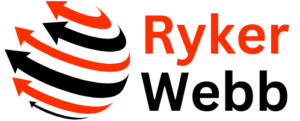Patent Image Micronaut Dashwing, This framework is a modern solution for building lightweight, fast, and scalable applications. It simplifies the creation of microservices and cloud-native applications while minimizing startup time and memory usage. Micronaut has become an essential tool for developers, especially when combined with features like native image and Docker support, creating a strong synergy with patent image micronaut dashing solutions.
In this article, we’ll explore the features, architecture, and practical use cases of Micronaut to help you unlock its full potential.
Table of Contents
Key Features and Benefits of Patent Image Micronaut Dashwing
Micronaut offers several advantages that set it apart from other frameworks:
- Low Memory Footprint: It uses ahead-of-time (AOT) compilation to reduce runtime overhead.
- Fast Startup Times: It is ideal for microservices and ensures applications are ready quickly.
- Built-In Dependency Injection: Simplifies configuration and development.
- Reactive and Non-Blocking: Optimized for scalable applications.
- Integration with Tools: Micronaut works seamlessly with GraalVM, Docker, and Kubernetes.
These features make Micronaut an excellent choice for developers working with microservices and native-image builds.
Understanding Micronaut’s Architecture
Micronaut relies on AOT compilation to precompute dependency injection and other tasks typically handled at runtime. This approach avoids reflection and runtime proxies, making applications faster and lighter.
Core Components:
- Dependency Injection: Micronaut avoids reflection by analyzing dependencies at compile time.
- HTTP Client: Its non-blocking HTTP client ensures seamless communication between microservices.
- Parameterization: Micronaut makes it easy to configure applications using externalized parameters.
These components allow Micronaut to deliver optimal performance for microservice architectures.
Micronaut vs. Alternatives
While Micronaut excels in performance, it’s often compared to Spring Boot.
| Feature | Micronaut | Spring Boot |
| Startup Time | Faster | Slower |
| Memory Usage | Lower | Higher |
| Native-Image Support | Strong (GraalVM ready) | Limited |
| Ease of Use | Simple but specific | Broader ecosystem |
Micronaut focuses on lightweight applications, whereas Spring Boot offers a broader but heavier framework.
Getting Started with Patent Image Micronaut Dashwing
To start using Micronaut, you’ll need to set up a project.
Steps:
- Create a New Project: Use the Micronaut CLI to scaffold a new application.
- Configure Beans and Controllers: Set up your application logic and REST endpoints.
- Test Your Application: Micronaut includes built-in testing tools for validation.
These steps help you build a simple yet effective application.
Native-Image Integration in Micronaut
Micronaut works seamlessly with GraalVM to compile applications into native images.
Why Use Native-Image?
- Improved Performance: Native-image applications start faster and use less memory.
- Portable Executables: GraalVM compiles code into standalone binaries.
- Docker Compatibility: These images integrate smoothly into containerized environments.
Native image is ideal for applications that prioritize efficiency.
Building Docker Images with Patent Image Micronaut Dashwing
Docker allows you to package and deploy Micronaut applications easily.
How to Build a Docker Image:
- Write Your Application: Develop your Micronaut app with controllers and endpoints.
- Add Docker Support: Use the Micronaut Maven Plugin to containerize the application.
- Optimize Startup Times: Integrate GraalVM native executables for faster initialization.
Micronaut makes Docker-based deployments straightforward.
Advanced Micronaut Applications
You can create AOT-optimized Docker images or experiment with CRaC Docker images for more advanced use cases. These advanced setups improve application performance in high-demand environments.
Parameterization and Testing in Micronaut
Micronaut simplifies configuration and testing:
- Parameterization: Use YAML or property files for flexible application settings.
- Testing Tools: Built-in tools allow unit and integration testing without external dependencies.
These features ensure your application runs reliably.
Port Management in Kubernetes for Micronaut Apps
When deploying to Kubernetes, managing ports is critical. Micronaut supports configuration for port bindings, making it easier to integrate into local and cloud-based Kubernetes clusters.
Integrating Docker and GraalVM
Combining Docker and GraalVM offers powerful results:
- Enhanced Efficiency: Native images reduce memory usage in containers.
- Cross-Platform Support: Run the same image in various environments.
This integration highlights the flexibility of Micronaut applications.
Practical Comparisons and Use Cases
Micronaut’s strengths are evident in performance tests and real-world applications. Developers report significant improvements in startup times and resource usage when migrating to Micronaut from heavier frameworks.
Next Steps for Mastery
To deepen your knowledge of Micronaut:
- Explore official documentation.
- Join the Micronaut community forums.
- Experiment with advanced features like CRaC and Kubernetes deployment.
Conclusion
Micronaut stands out as a powerful framework for building efficient, lightweight, and scalable applications. Its ahead-of-time compilation reduces memory use and improves startup times, making it a top choice for microservices. Features like seamless Docker and GraalVM integration further enhance its capabilities.
Compared to alternatives like Spring Boot, Micronaut excels in speed and resource efficiency, especially for native-image builds. With tools for parameterization, testing, and Kubernetes integration, Micronaut simplifies modern development challenges.
If you are looking to optimize your applications or explore innovative solutions like patent image micronaut dashwing, this framework offers a reliable and practical path forward.
FAQ’s
What is Micronaut used for?
Micronaut is used to develop lightweight, fast, and scalable microservices and cloud-native applications. It provides features like ahead-of-time (AOT) compilation and dependency injection, making it ideal for projects like patent image micronaut dashwing.
Is Micronaut owned by Oracle?
No, Micronaut is not owned by Oracle. It is maintained by the Open-Source community and the Micronaut Foundation, which supports its ongoing development.
Which companies are using Micronaut?
Companies like Netflix, Alibaba, and IBM use Micronaut for building microservices and applications, showcasing its versatility in handling solutions such as patent image micronaut dashwing.
What is the difference between Quarkus and Micronaut?
Quarkus focuses on optimizing Java for Kubernetes and containerized environments, while Micronaut emphasizes fast startup times and memory efficiency with AOT compilation, making it ideal for patent image micronaut dashwing.
What is the difference between JHipster and Micronaut?
JHipster is a development platform for full-stack applications, combining Angular or React with Spring Boot. Micronaut is a microservices framework optimized for performance and lightweight setups, suitable for tasks like patent image micronaut dashwing.
What is the difference between Grails and Micronaut?
Grails is a full-stack framework for web applications using Groovy, while Micronaut focuses on microservices and cloud-native development with faster performance, making it suitable for patent image micronaut dashwing projects.
What is the difference between Spring Boot and Micronaut?
Spring Boot is robust and feature-rich but has higher memory usage and slower startup times. Micronaut offers a lightweight alternative with AOT compilation, making it faster and ideal for patent image micronaut dashwing.
What language is Micronaut supported in?
Micronaut supports Java, Groovy, and Kotlin, providing flexibility for developers working on projects like patent image micronaut dashwing.

